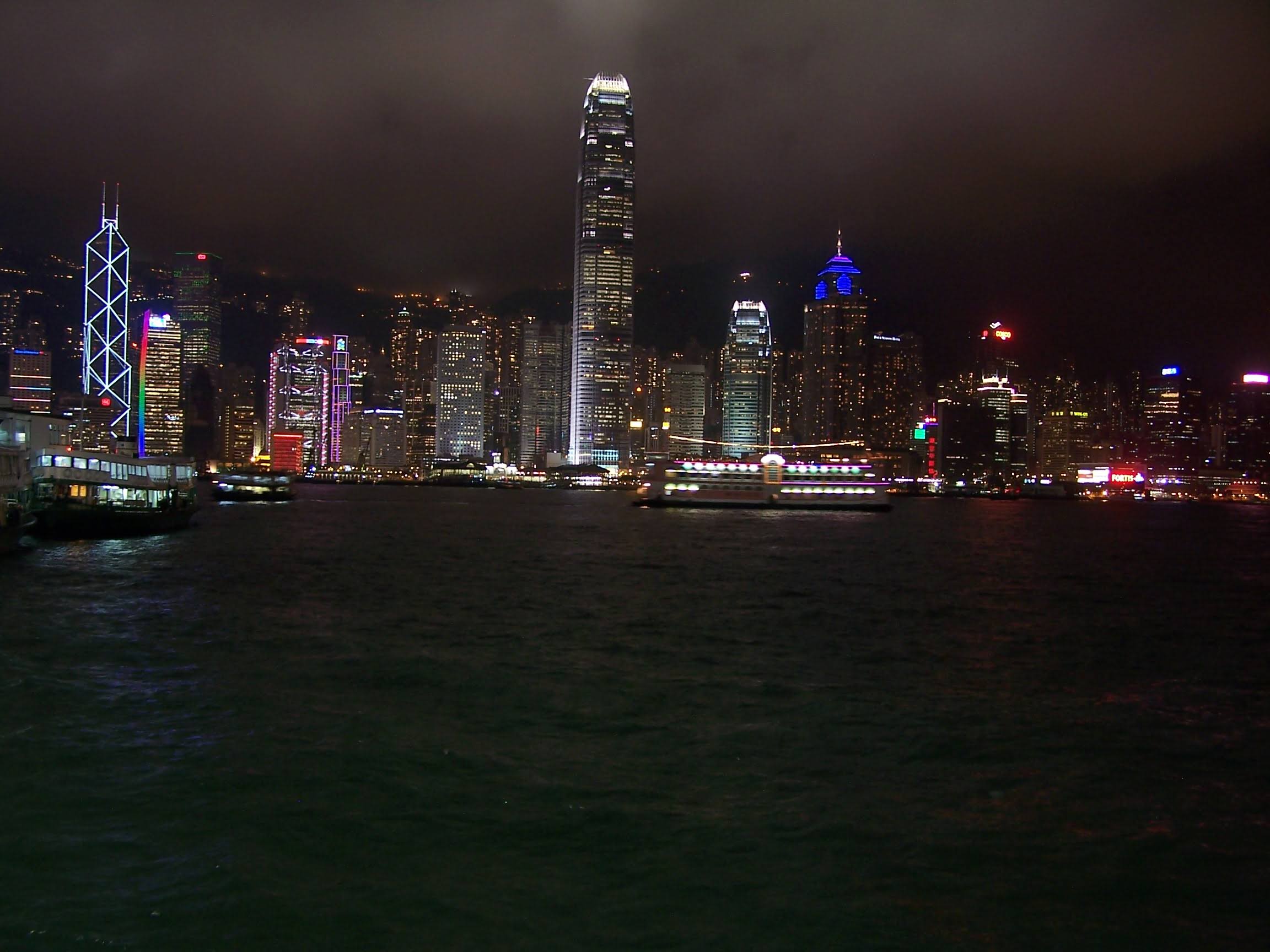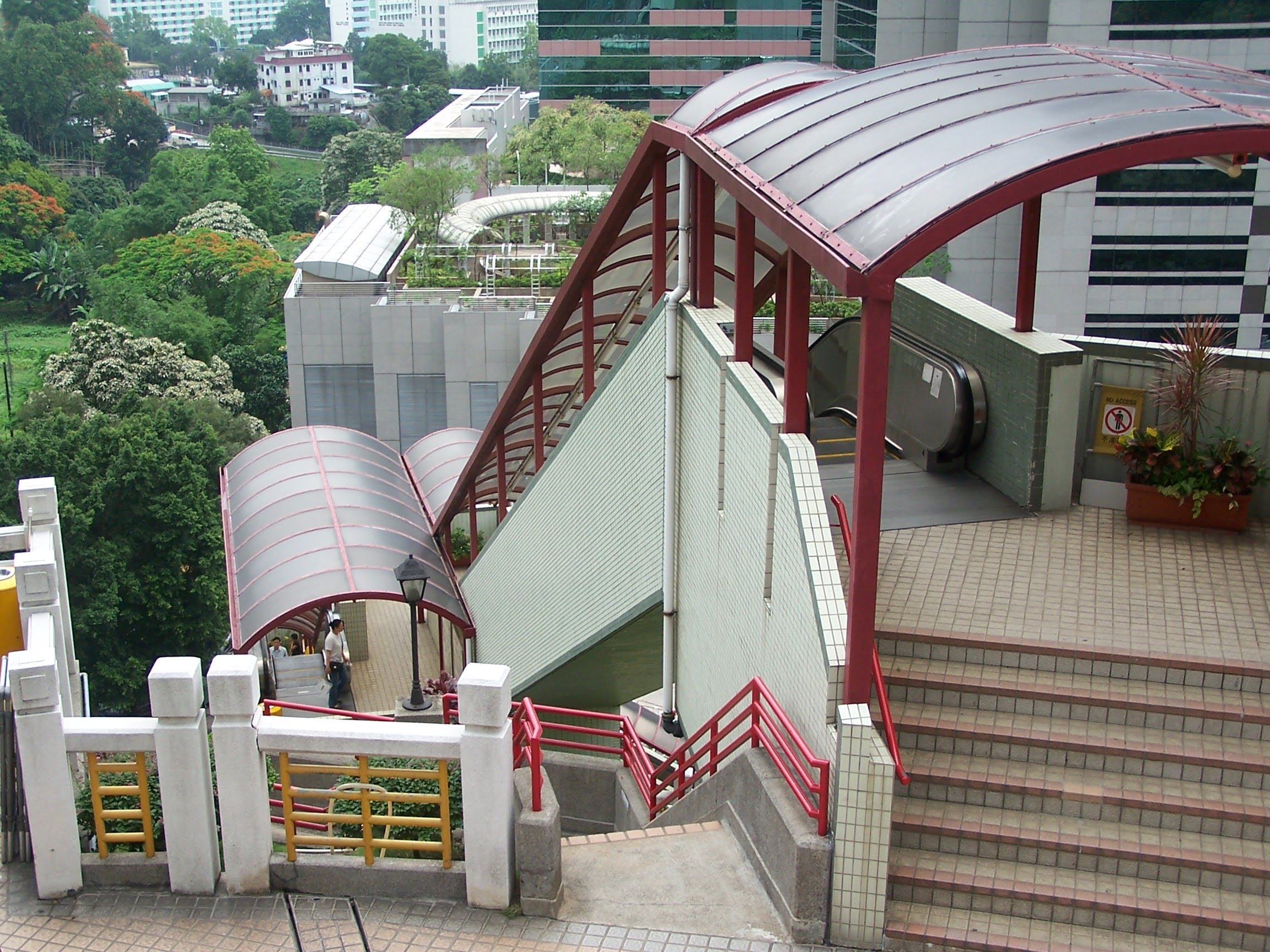Getting around in Hong Kong
I finally have a little bit of dead time in the hotel room. This is our first day in Bangkok, and we don't really have a
plan, so we're just waiting until the night markets get going so we can get some food. This gives me a chance to write a
little about Hong Kong.
Rafa, Linh and I were only there for a week, but we took advantage of every day and did a lot of really cool things. I don't know if I'll ever make time to go back and write about every single thing we did, so I'll start with just some of my general impressions of the Fragrant Harbor (a literal translation of Hong Kong).
First of all Hong Kong is a fairly big and very rainy place, but it is very possible to move all around it very quickly, without a car, even if one is very lazy and averse to getting rained upon. How can this be? One part of the answer is that the government and private enterprise have combined to provide many excellent transportation options. In our 7 days there, we made extensive use of public trains (MTR or 港鐵), public buses (巴士), privately run ferries (I didn't pick up the chinese for this one), and a ski-lift like gondola. There were also taxis (的士) all over the place.

We have all these things in the bay area, though. So what, you might ask, is so notable about this? First of all, these mass transit systems are each better than their bay area counterparts on their own. The MTR is superior to BART in almost every aspect. Inside the stations there are loud, clear announcements in multiple languages, whereas in BART stations the speakers and acoustic properties of the station are so bad that most of the time all I can make out is that someone is speaking. The MTR trains are also much quieter than BART ones. Riding a BART train is always a jarring experience because of the ridiculously loud scraping howl the trains make as they go down the tunnel. For the past two years I lived about 1½ miles away from an above-ground BART station, and even with my window closed I could hear the trains coming and going. The only noticable noise on the MTR comes from TVs playing advertisements. This is sort of annoying, but there are cars marked as “quiet” where the ads are muted. I could go on and on about the MTR, but possibly the coolest thing is that aboard each car there are route maps that light up to indicate which stations have already been passed, which is next, and which side the doors will open on. There are also computer LED displays that display the name of each stop in English and Chinese as the train approaches it.
The MTR is also different from BART in that it seems to offer slightly different transport options to those of different economic means. For example, the trains in the main urban areas of Hong Kong Island (香港島) and Kowloon Peninsula (九龍半島) have uncomfortable metal seats on the edge of the train and cool system maps that show the entire MTR system with lights indicating the next stop and where passengers can go if they transfer. Taking a train out to the New Territories (新界), where many lower-wage workers live, I was surprised to see not only that the cool light-up system maps were gone, but that I had the option of buying a first class ticket. The first class car was separated from the others by a door (none of the other cars have doors between them) that had a frosted glass window, so I couldn't really see what was inside.
I suspect, though, that it was like a train on the fanciest line, the Airport Express. This is a special train that makes only 3 stops in populated areas, and takes riders straight to the airport. It's very cushy. It has nice, big, soft seats, places near the doors to stow luggage, and the fanciest display of all showing not only what the next stop is, but how much farther the train has to go before it gets there. Tickets for the Airport Express line are much more expensive than tickets for other lines. And most of the people riding the line seemed to be caucasian, which I'll assume means they were better off than the average Hong Kong citizen.
Besides the awesomeness of public transportation, what's really special about Hong Kong is how easy it is to get places once you've gotten off mass transit. Walking long distances does not mean getting wet, as Hong Kong is littered with underground passageways (the subway stations are huge) and covered elevated walkways. Pedestrian and vehicle traffic are often completely separate. Sometimes walking long distances doesn't even mean burning many calories, as many walkways are actually moving walkways that Americans only see in airports. But, you might ask, doesn't it suck to have to walk up and down stairs all the time to get to and from these high and lowly paths? No! 99% of stairways in Hong Kong are equipped with escalators, in both directions. When a more direct vertical path is needed, elevators are also plentiful.

Walking in Hong Kong is also a pleasant experience because despite the throngs of people clogging major thoroughfares, people are remarkably calm and gentle as they hurry on to do whatever Hong Kong people do. This leads me to another observation; Hong Kong in general seemed very clean, orderly, and safe. It's possible that this is because I didn't stray too far from the major subway stops, but that's the impression I was left with.
Rafa, Linh and I were only there for a week, but we took advantage of every day and did a lot of really cool things. I don't know if I'll ever make time to go back and write about every single thing we did, so I'll start with just some of my general impressions of the Fragrant Harbor (a literal translation of Hong Kong).
First of all Hong Kong is a fairly big and very rainy place, but it is very possible to move all around it very quickly, without a car, even if one is very lazy and averse to getting rained upon. How can this be? One part of the answer is that the government and private enterprise have combined to provide many excellent transportation options. In our 7 days there, we made extensive use of public trains (MTR or 港鐵), public buses (巴士), privately run ferries (I didn't pick up the chinese for this one), and a ski-lift like gondola. There were also taxis (的士) all over the place.

We have all these things in the bay area, though. So what, you might ask, is so notable about this? First of all, these mass transit systems are each better than their bay area counterparts on their own. The MTR is superior to BART in almost every aspect. Inside the stations there are loud, clear announcements in multiple languages, whereas in BART stations the speakers and acoustic properties of the station are so bad that most of the time all I can make out is that someone is speaking. The MTR trains are also much quieter than BART ones. Riding a BART train is always a jarring experience because of the ridiculously loud scraping howl the trains make as they go down the tunnel. For the past two years I lived about 1½ miles away from an above-ground BART station, and even with my window closed I could hear the trains coming and going. The only noticable noise on the MTR comes from TVs playing advertisements. This is sort of annoying, but there are cars marked as “quiet” where the ads are muted. I could go on and on about the MTR, but possibly the coolest thing is that aboard each car there are route maps that light up to indicate which stations have already been passed, which is next, and which side the doors will open on. There are also computer LED displays that display the name of each stop in English and Chinese as the train approaches it.
The MTR is also different from BART in that it seems to offer slightly different transport options to those of different economic means. For example, the trains in the main urban areas of Hong Kong Island (香港島) and Kowloon Peninsula (九龍半島) have uncomfortable metal seats on the edge of the train and cool system maps that show the entire MTR system with lights indicating the next stop and where passengers can go if they transfer. Taking a train out to the New Territories (新界), where many lower-wage workers live, I was surprised to see not only that the cool light-up system maps were gone, but that I had the option of buying a first class ticket. The first class car was separated from the others by a door (none of the other cars have doors between them) that had a frosted glass window, so I couldn't really see what was inside.
I suspect, though, that it was like a train on the fanciest line, the Airport Express. This is a special train that makes only 3 stops in populated areas, and takes riders straight to the airport. It's very cushy. It has nice, big, soft seats, places near the doors to stow luggage, and the fanciest display of all showing not only what the next stop is, but how much farther the train has to go before it gets there. Tickets for the Airport Express line are much more expensive than tickets for other lines. And most of the people riding the line seemed to be caucasian, which I'll assume means they were better off than the average Hong Kong citizen.
Besides the awesomeness of public transportation, what's really special about Hong Kong is how easy it is to get places once you've gotten off mass transit. Walking long distances does not mean getting wet, as Hong Kong is littered with underground passageways (the subway stations are huge) and covered elevated walkways. Pedestrian and vehicle traffic are often completely separate. Sometimes walking long distances doesn't even mean burning many calories, as many walkways are actually moving walkways that Americans only see in airports. But, you might ask, doesn't it suck to have to walk up and down stairs all the time to get to and from these high and lowly paths? No! 99% of stairways in Hong Kong are equipped with escalators, in both directions. When a more direct vertical path is needed, elevators are also plentiful.

Walking in Hong Kong is also a pleasant experience because despite the throngs of people clogging major thoroughfares, people are remarkably calm and gentle as they hurry on to do whatever Hong Kong people do. This leads me to another observation; Hong Kong in general seemed very clean, orderly, and safe. It's possible that this is because I didn't stray too far from the major subway stops, but that's the impression I was left with.